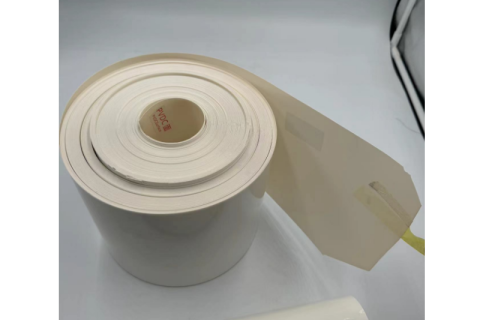
- Home
- >
News
Revolutionary Advance in Pharmaceutical Blister Packaging with White PVDC August 22, 2022 The state-of-the-art research facility in [City Name] A consortium of leading experts and researchers from the pharmaceutical packaging industry, including Dr.jackson Dr dunail, and their dedicated teams. Initiation: In an era where the pharmaceutical industry is constantly evolving to meet the escalating demands for safe and effective medications, the quest for optimal packaging solutions has become more crucial than ever. The increasing complexity of drug formulations and the need for prolonged shelf stability have posed significant challenges. This led to a focused effort on exploring novel materials that could provide an uncompromising shield against the external elements, ensuring the integrity and potency of pharmaceuticals throughout their lifecycle. The journey began several years ago when a group of visionary scientists and engineers, driven by a passion for innovation and a commitment to patient safety, embarked on a mission to revolutionize the landscape of pharmaceutical packaging. Their initial research involved a comprehensive analysis of various materials, considering factors such as barrier properties, chemical compatibility, and cost-effectiveness. The team spent countless hours in the laboratory, conducting meticulous experiments and subjecting potential materials to rigorous testing regimens. They evaluated a wide range of polymers and composites, but none seemed to meet all the stringent requirements until they stumbled upon the potential of white PVDC. However, the road to success was not without obstacles. The material presented unique processing challenges that required the development of specialized manufacturing techniques. The researchers had to fine-tune the extrusion and molding processes to achieve the desired thickness, uniformity, and clarity of the PVDC sheets. Simultaneously, they conducted extensive stability studies to assess the interaction of the white PVDC with different drug formulations. This involved subjecting the packaged drugs to accelerated aging conditions, simulating various environmental factors such as humidity, temperature fluctuations, and exposure to light. Through meticulous monitoring and analysis of the drug's physical and chemical properties over time, they were able to demonstrate the superior protective capabilities of the white PVDC packaging. Collaborations with leading pharmaceutical companies also played a crucial role in the development process. Feedback from industry partners provided valuable insights into the practical challenges faced on the production floor and the specific needs of different drug products. This iterative process of research, development, and feedback refinement was key to optimizing the performance and suitability of the white PVDC packaging solution. After years of dedicated research and development, the fruits of their labor have finally borne fruit. The use of white PVDC in pharmaceutical blister packaging has emerged as a game-changer. The material's exceptional barrier properties effectively prevent the ingress of moisture and oxygen, minimizing the degradation of drugs and extending their shelf life significantly. Clinical trials and real-world case studies have demonstrated that medications packaged in white PVDC retain their potency and efficacy for longer periods, reducing the risk of spoilage and ensuring patients receive high-quality treatments. This not only translates to better healthcare outcomes but also has economic implications, as it reduces the frequency of drug recalls and waste. The success of white PVDC has sparked a wave of excitement within the industry. Pharmaceutical companies are now actively exploring the integration of this innovative packaging material into their product lines, and regulatory authorities are closely evaluating its safety and performance to establish appropriate guidelines. Looking ahead, the future seems bright for white PVDC in pharmaceutical packaging. Continued research and development efforts are underway to further enhance its properties and expand its application to a wider range of drug formulations. This breakthrough is not only a testament to the power of scientific innovation but also a promising step towards ensuring the global availability of safe and reliable medications.

